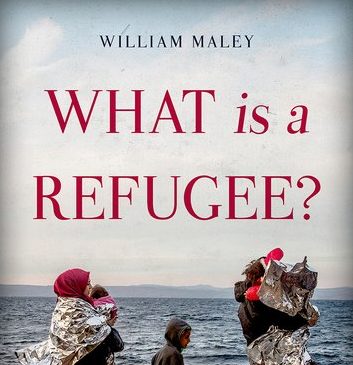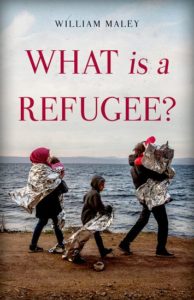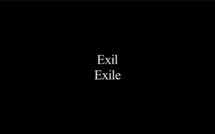

This is part of our special feature Governing the Migration Crisis.
Donald Trump punctuated his tumultuous first week as President with an acrimonious phone conversation with Australian Prime Minister Malcolm Turnbull. The reported source of contention was the Obama administration’s pledge to take in 1,250 refugees confined in the Australian detention centers on Manus Island and Nauru. During the phone call, President Trump apparently declared that it was “the worst deal ever.”[1] He expressed his frustration on Twitter the next day:
“Do you believe it? The Obama Administration agreed to take thousands of illegal immigrants from Australia. Why? I will study this dumb deal! — Donald J. Trump (@realDonaldTrump) February 2, 2017
The refusal to resettle refugees trapped in Australia’s detention archipelago was overshadowed by the chaos that followed the poorly implemented and quite possibly unconstitutional Travel Ban in which President Trump appeared, to many, to be in part making good on his campaign pledge to temporarily ban Muslims from entering the United States and to implement an ideological test and “extreme vetting.”[2] Neither the Travel Ban nor the resettlement of those refugees have been resolved. Though the question of resettlement has not received the attention of the Travel Ban, the plight of refugees caught in Australia’s abusive immigration system is equally urgent.[3]
Refugees attract much passion and invective and little understanding. If President Trump has studied the “dumb deal” – which appears to be proceeding – he would have learned a few things.[4] To begin, the “illegal immigrants” he referred to are refugees who have exercised their legal right to seek asylum. They are victims of Australia’s practice of intercepting boats with asylum-seekers outside of national waters and processing their claims in off-shore centers so that the country does not need to honor the protections for asylum-seekers guaranteed by Australian law. President Trump would have also learned that refugees resettled in the United States are subject to a rigorous vetting process and that the connections he continues to draw between terrorism and refugee resettlement are groundless.[5]
The conditions in detention are appalling, commonly leading to suicide and self-harm. Many detainees have lived in limbo for years while they wait to see if they will be resettled. The United Nations Special Rapporteur on Torture and other Cruel, Inhuman or Degrading Treatment or Punishment, Juan Mendez, determined that the Government of Australia’s Regional Processing Centre has violated the right of the asylum seekers, including children, to be free from torture or cruel, inhuman or degrading treatment.[6] The Australian government has made no secret that it sees its draconian measures as a deterrent to prevent migration (190).[7] Though Australia has taken detention to new levels of cruelty, its practices are also by no means unique. The United States pioneered the off-shore interception and return of refugees by stopping Haitians on the high seas and returning them to the country.
Hostility toward refugees is common. The media and politicians frequently represent them as threats using vivid, dehumanizing metaphors of waves, floods, and swarms. They irresponsibly depict refugees as possible terrorists when in fact they are far more likely to be fleeing terrorist groups (111-17). In some cases, the source of hostility is racism and the efforts of tabloids and political entrepreneurs to sell papers and win votes by stoking fear and hatred. But sometimes it is rooted in ignorance and misunderstanding. For people searching for a short, authoritative introduction to refugee issues, William Maley’s What is a Refugee? provides an important corrective to the invective that too often distorts debate.
What is a Refugee? pursues four major themes over eight chapters. First, Maley introduces readers to the diversity of refugees and to the complexities of defining who counts as a refugee. Second, he sets out to explain the causes of refugee flows rooted in the state system. Third, Maley addresses questions of diplomacy, including legal and political frameworks for negotiation over refugees and questions of humanitarian intervention. Finally, he connects the moral costs of refugee exclusion to broader questions of border controls.
Discussions about refugees are too often reduced to numbers or carried out through dehumanizing and stereotypical depictions of destitute, black bodies, often fleeing in dilapidated boats or immobilized in camps. This creates misplaced outrage, for instance when Europeans learned that many refugees carry smart phones.[8] In fact, refugees come from all social groups and strata. Many flee war and genocide, but some anticipate persecution and leave before it starts. People may also become refugees when they are already abroad – Nobel Laureate Thomas Mann was outside of Germany and warned not to return when Hitler came to power (7-8).
Some complications surrounding refugees are due to misperceptions, but there are also genuine controversies. Significantly, there is no universally agreed upon definition of refugees. Most discussions regarding the definition of a refugees start with Article 1.A. (2) of the 1951 Convention relating to the Status of Refugees:
As a result of events occurring before 1 January 1951 and owing to well-founded fear of being persecuted for reasons of race, religion, nationality, membership of a particular social group or political opinion, is outside the country of his nationality and is unable or, owing to such fear, is unwilling to avail himself of the protection of that country; or who, not having a nationality and being outside the country of his former habitual residence as a result of such events, is unable or, owing to such fear, is unwilling to return to it.
The 1951 Convention definition is highly influential. It is also controversial with its roots in Europe in the aftermath of the Second World War. The Convention was explicitly limited to people within Europe fleeing events that occurred before January 1, 1951 – it was not until the 1967 Protocol that the Convention acquired universal scope. Though people have fled state persecution since ancient times, the 1951 Convention in many respects created the legal and social category of “refugee” accompanied by a formal institutional structure that included specific rights such as non-refoulement (not to return refugees to territories where they face persecution) and corresponding obligations.
One source of controversy concerning the Convention definition is that it is in fact quite narrow. As Maley observes, the Convention stresses the role of persecution. People who are fleeing poverty, generalized violence, or environmental degradation do not appear to be covered. Furthermore, persecution must be for particular reasons: race, religion, nationality, membership of a particular social group or political opinion. Persecution for gender and sexual preference are omitted.
Another feature of the 1951 Convention is that it specifies that the person must be outside of the country of which she or he is a national. Of the 65.3 million people displaced from their homes in 2015, 52.6 million were internally displaced people fleeing violence or persecution without having crossed an international border. These people are not refugees under the Convention definition, though many of them fall under the mandate of the United Nations High Commissioner for Refugees (UNHCR). A final complication is that some commentators have sought to restrict the definition to state persecution.[9] Under this definition, people fleeing gangs, militia, or domestic violence are not thought of as refugees.
Later definitions have a broader scope, in part due to differences in circumstances (24-8). The 1969 Organization of African Unity defines refugees as also including every person who, owing to external aggression, occupation, foreign domination or events seriously disturbing public order in either part of the whole of his country of origin or nationality, is compelled to leave his place of habitual residence in order to seek refuge in another place outside of his country of origin or nationality (25).
The 1984 Cartagena Declaration on Refugees also employs a more generous definition that includes generalized violence, foreign aggression, and “other circumstances that have seriously disturbed public order” (26). To further complicate matters, refugees may also find protection under other human rights conventions and under national law (28-37).
Even when questions of definition are resolved, most of the world’s refugees have little prospect of successfully claiming asylum or being resettled. In 2016, the UNHCR helped resettle 125,600 refugees out of the 16.1 million under its mandate. Moreover, states actively work to prevent refugees from claiming asylum. Visa controls and carrier sanctions prevent most of the world’s refugees from lodging a claim to asylum. Europe cooperates with countries with poor human rights records such as the Sudan and Libya to stop refugees (and others) from reaching its borders. Many countries, including the UK, restrict the rights of asylum seekers to work with the aim of keeping them in poverty and dependent on public services so that they abandon their claims. This immiseration of asylum seekers is connected to rhetoric claiming that many so-called refugees are in fact merely seeking economic opportunities, a rhetorical move that echoes Nazi references to Jewish refugees fleeing Germany as “economic migrants” (8).
Matthew Gibney has described the situation as a “reductio ad absurdum of the contemporary paradoxical attitude towards refugees. Western states now acknowledge the rights of refugees but simultaneously criminalize the search for asylum.” (81)[10] As a result, most refugees must resort to smugglers to find safety for themselves and their families. States in turn demonize smugglers who facilitate movement for compensation or humanitarian reasons and conflate them with traffickers who kidnap people and transport them against their will. They also frequently defend punitive actions against smugglers and the refugees using their services by appealing to the refugees’ own interests (94-100). As Maley notes, “The overtones of the ‘White Man’s Burden’ are hard to miss – as if refugees themselves are incapable of understanding what is in their interests, so that others are justified in doing their thinking for them.” (165)
A central theme of What is a Refugee? is that the plight of refugees and the failure to secure their safety is very much a product of the system of sovereign nation-states. Maley quotes Emma Haddad here:
[refugees] are not the consequence of a breakdown in the system of separate states, rather they are an inevitable if unanticipated part of international society. As long as there are political borders constructing separate states and creating clear definitions of insiders and outsiders, there will be refugees (75).[11]
State persecution is often the direct cause of refugee flows (102-11). State policies toward refugees are often politically motivated and strategic, rather than governed by human rights or by need. In many cases such as the recent EU deal with Turkey, refugees are bartered for political goals (130-2). Though many states pay lip service to a desire to “share the burden” of refugee resettlement, there is no obligation under international law to do so, and little concrete will to engage in diplomacy that genuinely seeks to help refugees (137). Instead, rich states more often offload responsibilities to other weaker states in exchange for economic perks and a blind-eye toward human rights abuses (often directed toward migrants in the name of border controls). Within states, vocal groups actively oppose refugee resettlement and enjoy considerable political influence (88). People seeking protection or resettlement have little political voice and cannot vote in countries where they wish to settle. The result is that states and bureaucracies often prefer to divert refugees elsewhere or immobilize them abroad in “temporary” camps that often endure for years or even decades. Refugee camps offer shelter, but also confine and control refugees, allowing much of the world to ignore their plight (38).
What solutions are available? Though Maley does not rule out humanitarian intervention and peacekeeping to protect refugees in some circumstances, these circumstances are rare and in some cases “intervention may be worse than the disease” (177). Instead, there is a need to critically reappraise “some of the rigidities in the international order that either drive refugees into the arms of people smugglers, or leave them trapped in misery at international borders.” (179) Reappraisal involves a turn away from politics toward a “recovery of moral sentiment” (182). In particular, we need to remember that there is nothing natural about boundaries and borders, whether separating ‘gentleman’ from peasants, or citizens of one state from those of another. … They come about as a product of human action, even if not always of human design, and they entrench particular relations of power, which may benefit some people and severely disadvantage others (181).
If the current refugee regime is morally unacceptable, then we must attempt to change it. Border controls have economic costs (182-3). They also have moral costs (188-93), giving bureaucracies with limited accountability extensive powers (184-5).[12] Maley cites the political philosopher Chandran Kukathas who has explored how internal border controls compromise the freedom of most of the population, migrant or not – we sacrifice our individual liberty and give significant power to bureaucracies (185).[13]
Nor do refugees pose an insurmountable problem, in terms of resources if not political will. Maley rightly rejects the necessity of coercive borders controls, noting that “The world is actually full of borders that are not policed or controlled to ensure that refugees and asylum seekers cannot traverse them.” (187) In many cases, the most serious obstacles to addressing the plight of refugees are costly state efforts to prevent flight, to stymie applications for asylum, and to refuse local integration. They also arise from narratives that treat refugees as “burdens” rather than as people who have demonstrated extraordinary resourcefulness and perseverance.
Moral sentiment and a call to change narratives may amount to little in the face of tens of millions of people fleeing persecution. Nonetheless, it signals the recognition the current system that does little to help and much to hinder people escaping from violence is a moral travesty. Concrete solutions at this point in time may seem elusive, but most countries and their citizens can do better. As Maley reminds us, “that how we treat those we define as refugees may tell us little about them, but a great deal about ourselves.” (41)
Reviewed by Alex Sager, Portland State University
What is a Refugee?
by William Maley
Publisher: Oxford University Press
Paperback / 192 pages / 2016
ISBN: 9780190652388
References:
[1] Miller, Greg, and Philip Ricker. 2017. “‘This Was the Worst Call by Far’: Trump Badgered, Bragged and Abruptly Ended Phone Call with Australian Leader.” Washington Post, February 2. https://www.washingtonpost.com/world/national-security/no-gday-mate-on-call-with-australian-pm-trump-badgers-and-brags/2017/02/01/88a3bfb0-e8bf-11e6-80c2-30e57e57e05d_story.html?utm_term=.e11381bbc970.
[2] Somin, Ilya. 2017. “Why Trump’s Refugee Order Is Unconstitutional.” Washington Post, February 5. https://www.washingtonpost.com/news/volokh-conspiracy/wp/2017/02/05/why-trumps-refugee-order-is-unconstitutional-discrimination-on-the-basis-of-religion/
[3] Amnesty International. 2016. “Australia: Appalling Abuse, Neglect of Refugees on Nauru,” August 2. https://www.amnesty.org/en/latest/news/2016/08/australia-abuse-neglect-of-refugees-on-nauru/.
[4] Daniel, Zoe. 2017. “Manus Island, Nauru Refugees Fingerprinted as Processing for US-Australia Resettlement Deal Begins.” ABC News, March 20. http://www.abc.net.au/news/2017-03-20/refugee-processing-for-us-australia-resettlement-deal-begins/8368574.
[5] Capps, Randy, and Michael Fix. 2015. “Ten Facts About U.S. Refugee Resettlement.” Migration Policy Institute. http://www.migrationpolicy.org/research/ten-facts-about-us-refugee-resettlement?gclid=CLGGtaGJr9QCFQ5EfgodW5MEYw; Nichols, Chris. 2017. “MOSTLY TRUE: Odds of Fatal Terror Attack in U.S. by a Refugee? 3.6 Billion to 1.” Politfact California, February 1. http://www.politifact.com/california/statements/2017/feb/01/ted-lieu/odds-youll-be-killed-terror-attack-america-refugee/;
Méndez, Juan E. 2015. “Report of the Special Rapporteur on Torture and Other Cruel, Inhuman or Degrading Treatment or Punishment.” Human Rights Council. https://static.guim.co.uk/ni/1425873116713/Mendez-report.pdf.
[7] Doherty, Ben, Nick Evershed, and Behrouz Boochani. 2017. “Revealed: Year-Long Campaign to Make Conditions Harsher for Manus Refugees.” The Guardian, May 16. https://www.theguardian.com/australia-news/2017/may/17/revealed-year-long-campaign-to-make-conditions-harsher-for-manus-refugees?CMP=Share_iOSApp_Other.; Mann, Itamar, and Diala Shamas. 2017. “An Urgent Need for International Action on Australia’s Refugees.” Just Security, June 6. https://www.justsecurity.org/41739/urgent-international-action-australias-refugees/.
[8] O’Malley, James. 2017. “Surprised That Syrian Refugees Have Smartphones? Sorry to Break This to You, but You’re an Idiot You Don’t Need to Be a White Westerner to Own a Relatively Cheap Piece of Technology.” The Independent, September 7. https://www.independent.co.uk/voices/comment/surprised-that-syrian-refugees-have-smartphones-well-sorry-to-break-this-to-you-but-youre-an-idiot-10489719.html.
[9] Price, Matthew. 2006. “Persecution Complex: Justifying Asylum Law’s Preference for Persecuted People.” Harvard International Law Journal 47 (2): 413–66.
[10] Gibney, Matthew. 2006. “A Thousand Little Guantanamos: Western States and Measures to Prevent the Arrival of Refugees.” In Displacement, Asylum, Migration: The Oxford Amnesty Lectures 2004, edited by Kate E. Tunstall, 139–69. Oxford ; New York: Oxford University Press.
[11] Haddad, Emma. 2008. The Refugee in International Society: Between Sovereigns. Cambridge Studies in International Relations 106. Cambridge ; New York: Cambridge University Press.
[12] Sager, Alex. 2017. “Immigration Enforcement and Domination: An Indirect Argument for Much More Open Borders.” Political Research Quarterly 70 (1): 42–54.
[13] Kukathas, Chandran. 2015. “Why Immigration Controls Resemble Apartheid in Their Adverse Consequences for Freedom.” Democratic Audit UK, September 15. http://www.democraticaudit.com/2015/09/15/why-immigration-controls-resemble-apartheid-in-their-adverse-consequences-for-freedom/.
Published on October 2, 2017.




